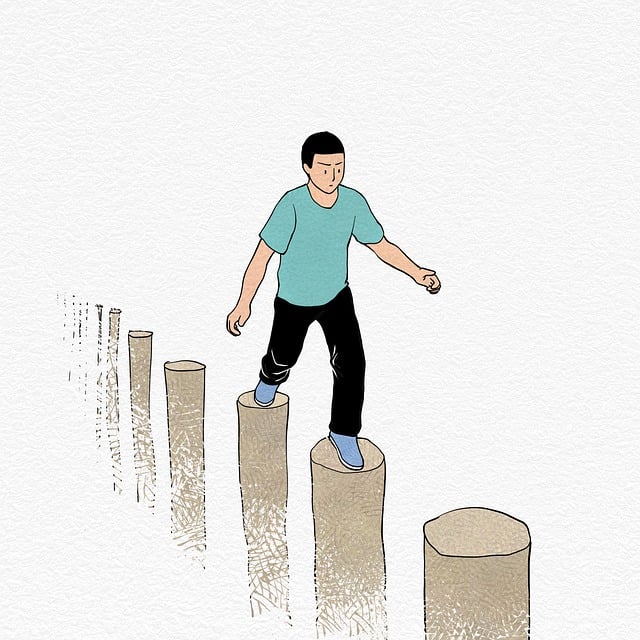🌟 Introduction
🧠 4 Mindset Shifts to Turn Frustration into Focus
In today’s fast-paced world, frustration is almost inevitable. Whether it’s a missed deadline, a traffic jam, or a difficult conversation, these moments can derail your productivity and peace of mind. But what if you could transform that frustration into fuel for focus? By shifting your mindset, you can turn emotional turbulence into clarity and drive. This article explores four powerful mindset shifts that help you stay centered, productive, and motivated—even when life throws curveballs.
🔄 4 Mindset Shifts to Transform Frustration into Focus

1. From Reaction to Reflection
Instead of immediately reacting to a frustrating situation, pause and reflect. Ask yourself:
- What triggered this emotion?
- Is this worth my energy?
- What can I learn from this?
🧘 Tip: Practice mindfulness or journaling to build self-awareness and reduce impulsive reactions.
2. From Blame to Ownership
Blaming others or circumstances only prolongs frustration. Shift your mindset to ownership:
- What part of this can I control?
- How can I respond constructively?
💪 Tip: Use empowering language like “I choose” or “I will” to reinforce personal agency.
3. From Perfection to Progress
Frustration often stems from unrealistic expectations. Embrace progress over perfection:
- Celebrate small wins.
- Accept mistakes as part of growth.
📈 Tip: Set achievable goals and track your progress weekly to stay motivated.
4. From Emotion to Intention
Channel emotional energy into intentional action:
- Turn anger into determination.
- Use stress as a signal to prioritize.
🎯 Tip: Create a “focus ritual” (e.g., deep breathing + goal setting) to reset your mindset when overwhelmed.
📊 Trends in Emotional Intelligence & Focus
Emotional intelligence (EQ) is no longer just a buzzword—it’s a strategic asset in both personal development and workplace success. As we move through 2025, several key trends are shaping how individuals and organizations harness EQ to improve focus, productivity, and well-being:

1. Emotional Intelligence Market Growth
- The global emotional intelligence market was valued at $868 million in 2021 and is projected to grow at a 25.2% CAGR through 2032.
- This surge reflects increased demand for EQ training in leadership, education, and healthcare.
2. EQ as a Predictor of Success
- 58% of job performance is influenced by emotional intelligence, and 90% of top performers have high EQ.
- EQ is now considered more critical than IQ in leadership and team dynamics.
3. AI-Assisted EQ Training
- Platforms like Replika and Woebot use AI to simulate empathetic conversations, helping users develop emotional regulation and empathy.
- Expect more personalized, tech-driven EQ coaching tools in the near future.
4. Rise of EQ-Driven Leadership
- Companies like Microsoft have embraced empathy-focused leadership, transforming workplace culture and boosting engagement.
- Empathy is becoming a measurable leadership metric in performance reviews.
5. Hybrid Work & Emotional Agility
- The shift to hybrid work has amplified the need for emotional intelligence to manage remote teams, prevent burnout, and foster belonging.
- EQ-focused communication training is now essential for virtual collaboration.
💡 Suggestions for Daily Practice

🌅 Morning Mindset Rituals
- Gratitude journaling: Write down 3 things you’re grateful for each morning to prime your brain for positivity.
- Mindful breathing: Spend 5 minutes in deep breathing or meditation to center your emotions.
- Intentional goal-setting: Choose one emotional goal (e.g., patience, empathy) to focus on for the day.
🧠 Emotional Intelligence Builders
- Name your emotions: Practice labeling your feelings throughout the day—this boosts emotional awareness.
- Empathy check-ins: Ask yourself, “What might this person be feeling?” before reacting in conversations.
- Reflective listening: Repeat back what someone says to ensure understanding and show you care.
🔍 Focus-Enhancing Habits
- Pomodoro technique: Work in 25-minute focused blocks with 5-minute breaks to maintain mental clarity.
- Digital detox windows: Schedule 1–2 hours of screen-free time daily to reset your attention span.
- Single-tasking: Prioritize one task at a time to reduce cognitive overload and improve performance.
🌙 Evening Emotional Reset
- Daily reflection: Journal about emotional wins and challenges—what triggered you, what helped you cope.
- Gratitude rewind: Revisit moments of joy or kindness from the day to reinforce emotional resilience.
- Sleep hygiene: Wind down with calming rituals like reading or stretching to support emotional regulation.
⏳ How Long Does It Take to Shift Your Mindset?
🧠 It’s Not Instant—But It’s Possible
- Mindset change typically takes weeks to months, depending on the depth of the belief and consistency of new habits.
- According to psychology experts, habit formation—which is key to mindset shifts—can take anywhere from 21 to 66 days, though some changes may take longer.
🔄 Factors That Influence the Timeline
- Your current mindset: Fixed mindsets may take longer to shift than flexible ones.
- Motivation & clarity: Knowing why you want to change speeds up the process.
- Support system: Encouragement from others can reinforce new beliefs.
- Daily practice: Consistent journaling, mindfulness, and reflection accelerate transformation.
💥 Sudden vs. Gradual Shifts
- While some mindset shifts happen in a single emotional moment (like a powerful realization), most require ongoing effort and self-awareness.
- Think of it like rewiring your brain—each new thought pattern strengthens the change.
🏁 Conclusion
Frustration doesn’t have to be a roadblock—it can be a stepping stone. By adopting these four mindset shifts, you empower yourself to turn emotional chaos into clarity and purpose. The key is consistency and self-compassion. With practice, you’ll find that focus isn’t just a skill—it’s a way of life.
📚 References
- Goleman, D. (1995). Emotional Intelligence. Bantam Books.
- Kabat-Zinn, J. (2003). Mindfulness-Based Stress Reduction. University of Massachusetts Medical School.
- Harvard Business Review. (2022). The Neuroscience of Focus and Productivity.
❓ FAQs
Q1: Can frustration ever be useful?
Absolutely—frustration can be surprisingly useful when understood and harnessed the right way. Rather than being just an emotional irritant, it often acts as a signal for growth, change, and deeper focus. Here’s how:
🔥 The Hidden Power of Frustration
1. Catalyst for Change
Frustration is your brain’s way of saying, “Something isn’t working—let’s fix it.” Like hunger signals the need for food, frustration signals the need for a new approach or mindset.
2. Boosts Strategic Thinking
When managed well, frustration can push you to become more strategic. It forces you to pause, reassess, and find better solutions rather than settling for what’s not working.
3. Enhances Learning
In education and personal development, frustration can actually increase attention and motivation. Neuroeducation studies show that when students experience frustration in manageable doses, it helps them persevere and learn more effectively.
4. Reveals Passion & Purpose
What frustrates you often points to what you care deeply about. If something consistently bothers you, it might be a clue to your values, passions, or even your life’s calling.
5. Signals Growth Potential
Frustration often arises when you’re bumping up against the limits of your current abilities. That discomfort is a sign you’re ready to level up—like a plant outgrowing its pot.
So yes, frustration can be a powerful ally—if you listen to it instead of suppressing it. Want help turning a current frustration into a growth strategy? I’d love to help you map it out.
Q2: What’s the best way to start reframing negative thoughts?
Great question, Kristan! Reframing negative thoughts is one of the most powerful emotional intelligence skills—and the good news is, you can start right now. Here’s how:
🧠 Best Ways to Start Reframing Negative Thoughts
1. Catch the Thought
- Awareness is step one. When a negative thought pops up, pause and notice it.
- Use a journal or note-taking app to jot it down. This helps you spot patterns and triggers.
2. Challenge Its Truth
- Ask: Is this thought 100% true? Often, it’s not.
- Example: “I never do anything right” → “I make mistakes sometimes, but I also have many successes”.
3. Flip the Script
- Replace the thought with a more realistic or empowering one.
- Try: “I’m failing” → “I’m learning through challenges.”
4. Play Detective
- Look for evidence that contradicts the negative thought.
- Recall times you succeeded, overcame obstacles, or received praise.
5. Use Gratitude as a Disruptor
- You can’t hold a negative and grateful thought at the same time.
- Pause and name 3 things you’re thankful for—it shifts your emotional lens.
6. Act Opposite to the Feeling
- If your thought says “I can’t do anything,” do one small thing—like washing a dish or taking a walk.
- This breaks the thought’s grip and builds momentum.
Reframing isn’t about ignoring reality—it’s about choosing a more helpful perspective. Want me to help you create a personal “thought reframing cheat sheet” for your most common negative patterns?

